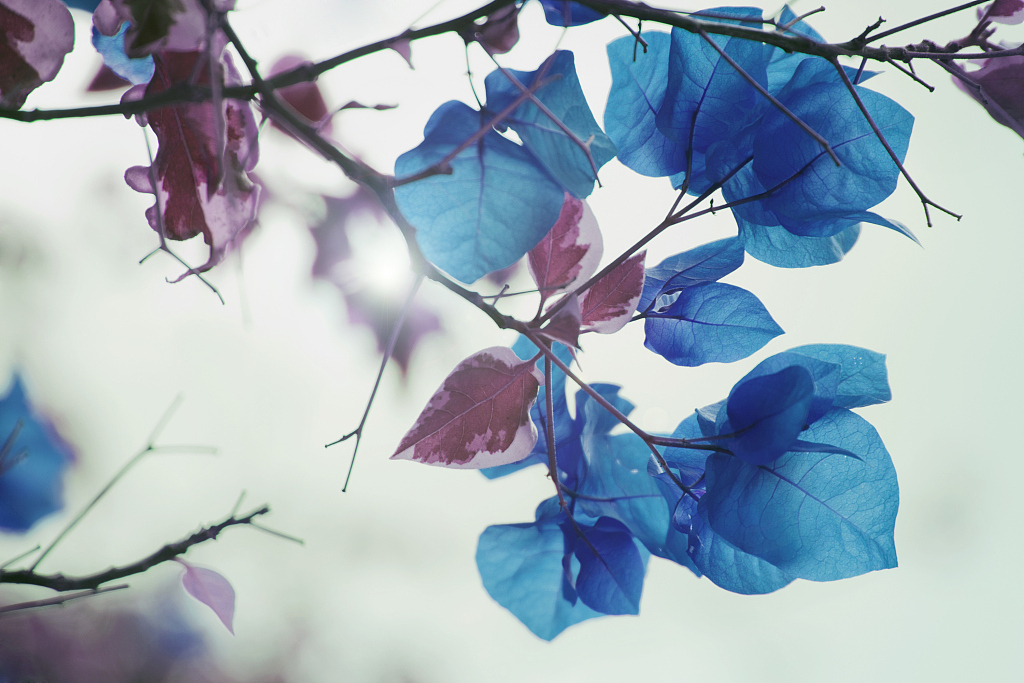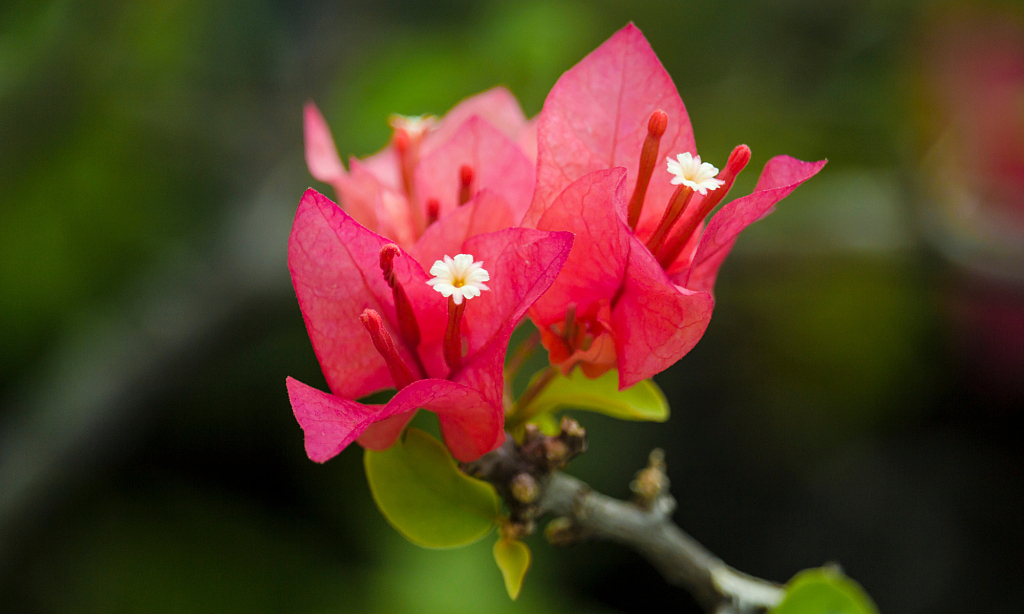If you visit southern parts of China during November, you will see clusters of brightly-colored flowers with leafy petals blooming everywhere. This is the bougainvillea, one of the most famous flowers of south China. Cities like Shenzhen, Huizhou and Zhuhai all honor the bougainvillea as the "Flower of the City." In Hong Kong Special Administrative Region, bougainvillea is also very popular as an ornamental plant.

Bougainvillea flowers blooming in Hong Kong SAR, south China. /VCG Photo
Bougainvillea flowers blooming in Hong Kong SAR, south China. /VCG Photo
Bougainvillea is a vine species that is native to South America. It was introduced to Europe and other parts of the world after the 19th century. The plant is evergreen in areas with plenty of rainfall all over the year, or deciduous in dry areas.

Bougainvillea in blue-purple color. /VCG Photo
Bougainvillea in blue-purple color. /VCG Photo
One interesting fact about the plant is, the showy and colorful "petals" are actually bracts, which is considered as specialized leaves of the plant. The actual flower of bougainvillea is small and typically white, surrounded and protected by the outside bracts.

The actual flower of bougainvillea is typically small and white, surrounded by the outside colored bracts. /VCG Photo
The actual flower of bougainvillea is typically small and white, surrounded by the outside colored bracts. /VCG Photo
Bougainvillea has a long blooming period that could last from October to next June, sometimes even for the whole year. But as a tropical plant, only warm climate without frost could allow it to bloom for so long. To grow bougainvillea well, make sure it gets at least five hours of direct sunlight a day. Well-drained soil and regular monthly fertilization during blooming season will help a lot for it to produce better flowers in your winter garden.

Clusters of white bougainvilleas. /VCG Photo
Clusters of white bougainvilleas. /VCG Photo
Though the plant is adorable, its toxic sap can cause serious skin rashes. Keep your pets and children away from it to avoid accidents.
Read more:
Season of flower
(All images via VCG.)
(If you want to contribute and have specific expertise, please contact us at nature@cgtn.com)